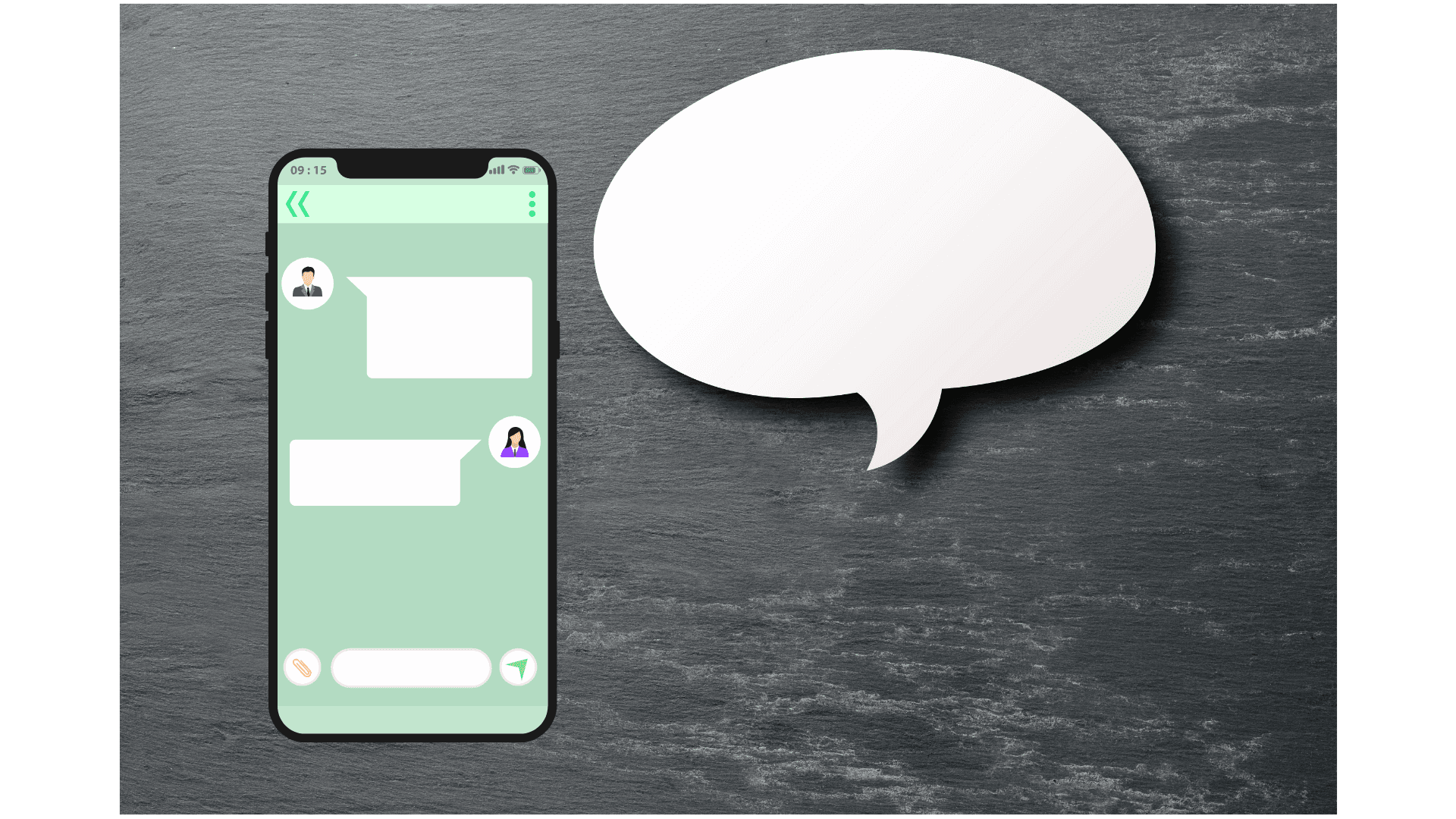Free Group Chat Apps for Work: The Complete List
3 sept. 2024
James Dean
Why Use Free Group Chat Apps for Work
Free group chat apps boost workplace communication. They help teams work better together, simplify tasks, and keep everyone in sync. No more digging through long email chains—quick messages get you answers fast.
These apps shine in remote or hybrid work. They build community and keep teams connected, no matter where people are. And the best part? These tools come at no cost.
Benefits of Free Group Chat Apps:
Better Communication: Quick messages and updates keep everyone in the loop.
Smoother Workflows: Organized channels and easy file sharing make managing projects simple.
Budget-Friendly: No price tag means teams of any size can use them.
Team Spirit: Promotes teamwork and makes sure everyone has a say.
Simple to Use: User-friendly design means less time spent on training.
Let's explore some top free group chat apps to help you pick the right one for your team.
Top Free Group Chat Apps for Work
Finding the right group chat app can make a world of difference for your team. Here's a rundown of the top free options to consider:
Pebb: stands out by offering a comprehensive communication and engagement platform entirely for free at any scale. Unlike other apps that limit features in their free versions, Pebb provides everything from real-time chat messaging to internal news feeds, detailed employee profiles, clubs for focused discussions, and a knowledge library to centralize important documents. Pebb’s mobile-first design ensures that your team stays connected, whether they’re in the office or on the go, making it particularly beneficial for organizations with frontline workers. Plus, Pebb’s all-in-one approach reduces the need for multiple apps, streamlining communication and collaboration without the hidden costs.
Slack: Known for its organized channels and integrations with other tools. Slack’s free version limits you to 90 days of message history and 10 integrations, but it’s great for structured team communication.
Microsoft Teams: Excellent for those already using Office 365. It offers chat, video calls, and file sharing. The free version includes unlimited chat but has some storage limits and lacks certain advanced features.
Google Chat: Part of the Google Workspace. It’s easy to use and integrates seamlessly with other Google tools. The free tier is quite basic but sufficient for small teams needing simple chat functionality.
Zoom: Famous for its video conferencing capabilities. While its primary focus is video, it also offers chat features. Free accounts have a 40-minute limit on group meetings, which might be a drawback for some.
Discord: Originally for gamers, now popular in various industries. It offers robust voice, video, and text chat options. The free version is generous, but its interface might feel a bit casual for some professional environments.
For a more comprehensive look at the best free group communication apps and how they can connect teams without breaking the bank, check out our guide on the Best Free Group Communication Apps for 2024.
These apps each bring something unique to the table. Consider what your team needs most—whether it's integrations, video conferencing, or straightforward messaging—and pick the one that fits best.
Choosing the Right Group Chat App
Picking the right group chat app can feel like a big decision. Different teams have different needs, so it's key to look at a few factors to find the perfect fit.
First off, consider your team size. Some apps work better for small teams, while others can handle larger groups without a hitch.
Slack: Great for structured communication and smaller teams.
Microsoft Teams: Ideal if you're part of a larger organization already using Microsoft 365.
Next, think about the integrations you need. Do you rely on specific tools like Google Workspace or Office 365? Make sure your chat app can seamlessly connect with these.
Google Chat: Perfect for teams using Google tools.
Microsoft Teams: Syncs effortlessly with Office 365.
Security is another biggie. Look at your security and compliance needs. If you're in a regulated industry, you need an app that offers robust security features.
Slack: Provides strong encryption but more advanced features are in paid plans.
Microsoft Teams: Strong security, especially for enterprise users.
Ease of use is also crucial. You want a platform that's user-friendly so your team can hit the ground running.
Discord: User-friendly but may feel too casual for some.
Zoom: Easy to use for video calls but limited chat functionalities.
Consider your industry. Different industries have different communication needs.
Healthcare: Might need secure messaging and compliance features.
Tech: Often requires strong integrations and project management tools.
Take a good look at what your team needs most. Whether it's integrations, security, or just ease of use, there's a group chat app out there that fits. For more detailed guidance, you can explore our article on finding the best free chat app for work to enhance team communication, which reviews top free chat apps and highlights Pebb's unique features.

Key Features of Group Chat Apps
Group chat apps come with a bunch of features that make team collaboration a breeze. Here are the essentials to look for:
Messaging Capabilities: Most apps offer both channel-based and direct messaging. Channels help organize conversations by topic or team, while direct messages allow one-on-one chats.
File Sharing: Easy file sharing is a must. Whether it's docs, images, or spreadsheets, quick access to shared files keeps everyone on the same page.
Video and Voice Calling: Integrated video and voice calls are crucial for remote teams. Apps like Zoom shine here, offering clear, reliable communication.
Tool Integrations: Seamless integration with calendars, project management tools, and other software boosts productivity. Google Chat works great with Google Workspace, while Microsoft Teams syncs well with Office 365.
Search Functionality: Advanced search helps you find messages, files, or team members quickly. Slack's search feature is robust, making it easy to track down what you need.
Security Features: Strong encryption and compliance options are key, especially for industries with strict regulations. Microsoft Teams offers solid security features for enterprise users.
User-Friendly Design: A simple, intuitive interface means less time training and more time working. Discord, though casual, is very user-friendly.
Customization: Personalize your workspace with custom notifications, themes, and more. This makes the app feel tailored to your team's needs.
These features can transform how your team communicates and collaborates, making work smoother and more efficient. For more insights on how to choose the best chat app for your team, check out our comprehensive guide on why your team needs a staff chat app and how to choose the best one.
Benefits of Using Free Group Chat Apps
Free group chat apps offer tons of perks for teams. They’re not just budget-friendly—they’re game-changers for how teams communicate and work together. Here’s why you should consider them:
Cost-Effective: No need to shell out big bucks. These apps are free, making them perfect for teams of any size without straining the budget.
Easy Implementation: No complicated setup. Most of these apps are plug-and-play, meaning you can get started almost immediately without a steep learning curve.
Scalability: Whether you’re a small team or a growing organization, these apps can scale with you. Add more members as you grow without worrying about extra costs.
Enhanced Communication: Quick, real-time messaging keeps everyone in the loop. This means fewer misunderstandings and faster decision-making.
Improved Decision-Making: Instant access to team input and quick clarifications help make better, more informed decisions.
Increased Productivity: Organized channels and integrated tools streamline tasks, reducing the time wasted on switching between apps. For a deeper dive into the best work chat apps that can enhance your team's communication, check out this comprehensive guide.
Employee Engagement: Features like dynamic news feeds and clubs foster a sense of community. This keeps employees engaged and connected, boosting morale.
Better Collaboration: Shared files, easy access to information, and integrated project management tools make collaboration a breeze.
Flexibility: Mobile-first designs ensure that you can stay connected and productive, no matter where you are. For more insights on top free employee communication apps that can boost workplace engagement, you might find this article very useful.
These benefits make free group chat apps a no-brainer for any team looking to boost their communication and productivity without breaking the bank.
Potential Drawbacks of Free Group Chat Apps
Free group chat apps come with their share of limitations. While they’re great for budget-conscious teams, there are some potential downsides you should be aware of.
First, limited storage can be a big issue. Many free apps cap your storage space, which means you might run out of room for files and messages quickly. This can be a pain for larger teams or those dealing with a lot of data.
Slack: Limits you to 5GB of storage for the entire team.
Microsoft Teams: Free version offers only 2GB of personal storage and 10GB of shared storage.
Google Chat: Storage is tied to your Google Drive, which may fill up fast if you’re a heavy user.
Security concerns might be another drawback. Free versions often come with basic security features, but may lack the robust options found in paid plans. This can be a problem if you’re dealing with sensitive information or need to comply with industry regulations.
Basic encryption: Most free apps offer encryption, but advanced security measures are often reserved for premium users.
Two-factor authentication: Not always available in free plans, which can leave your team vulnerable.
Reduced customer support is another limitation. Free versions usually offer limited or no customer support, which can be frustrating if you run into issues.
Limited support: You might have to rely on forums or FAQs instead of direct help.
Response times: Even if support is available, response times can be slower for free users.
These limitations can impact larger teams or organizations with specific needs. However, you can mitigate some of these drawbacks by combining multiple tools or upgrading to paid plans if necessary. For example, you can explore free chat software options for business use in 2024 to find a tool that fits your needs without compromising on essential features.
Combine tools: Use a mix of free apps to cover all your bases.
Upgrade plans: Consider investing in a paid plan if your needs grow.
Being aware of these potential drawbacks helps you make an informed decision. Balancing the benefits with these limitations ensures you choose the best tool for your team’s needs.
Recap and Final Thoughts
Free group chat apps can boost your team's communication and collaboration. They cut down on email overload, speed up decision-making, and foster a sense of community. No matter how big or small your team is, these tools keep everyone in the loop.
Each app has its own special features. Some excel at integrations, while others focus on video calls or security. Consider what your team needs most. Is it easy file sharing? Strong security? Or maybe a simple interface? Pick the app that fits your team best.
Free group chat apps are cost-effective, quick to set up, and can grow with your team. They enhance communication and boost productivity. But keep in mind potential downsides like limited storage, basic security, and less customer support. You might want to use a mix of free apps or upgrade to paid plans as your needs expand.
The right group chat app can transform your team. It boosts employee engagement, sharpens decision-making, and encourages better teamwork. Take your time to compare options. The perfect tool is out there, ready to elevate your team's communication and productivity.





